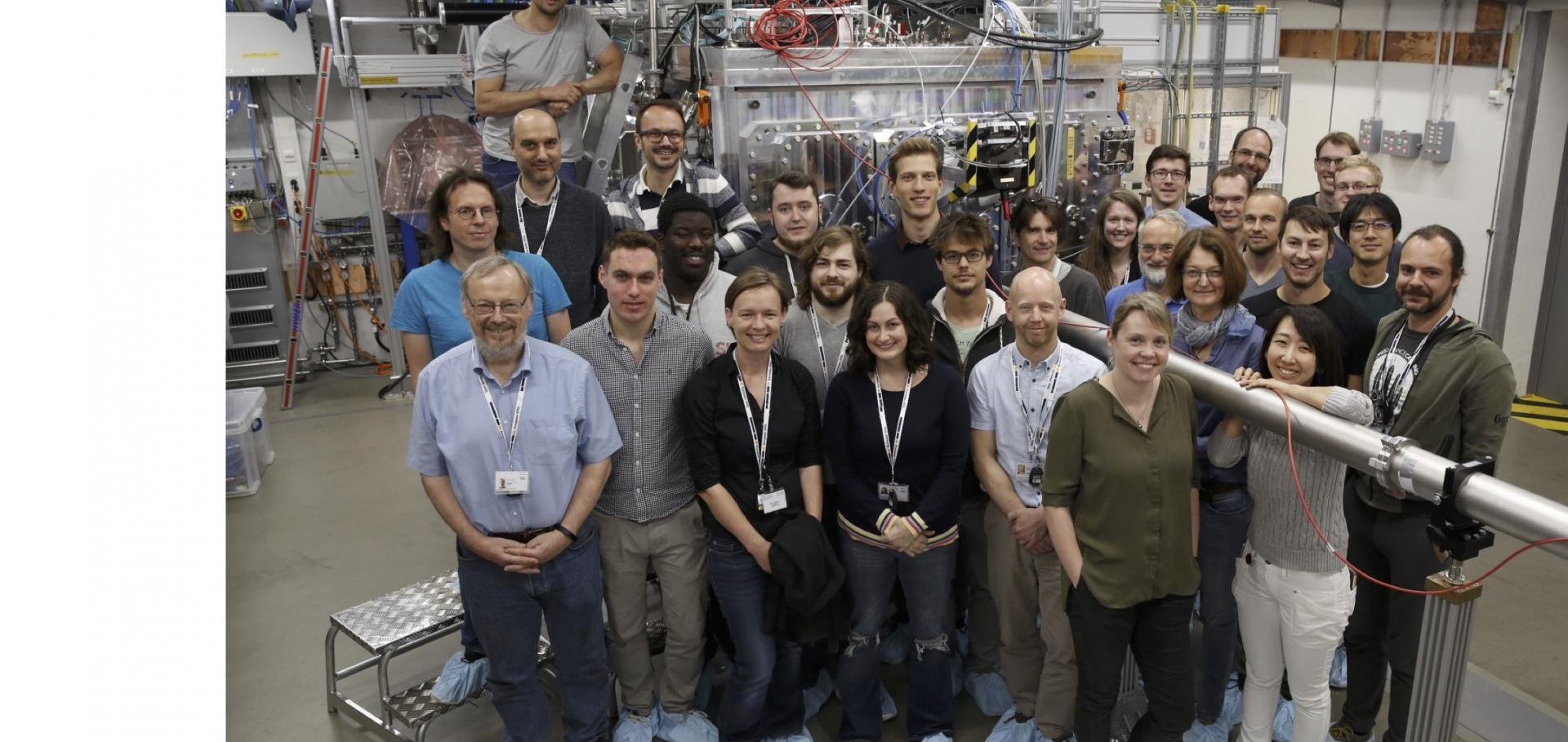Phase transitions in shock compressed bismuth identified using single photon energy dispersive X-ray diffraction (SPEDX)
Journal of Physics Conference Series IOP Publishing 950:4 (2017) 042038
Measurements of the K-shell opacity of a solid-density magnesium plasma heated by an X-ray free electron laser
Physical Review Letters American Physical Society 119 (2017) 085001
Abstract:
We present measurements of the spectrally-resolved X-rays emitted from solid-density magnesium targets of varying sub-μm thicknesses isochorically heated by an X-ray laser. The data exhibit a largely thickness-independent source function, allowing the extraction of a measure of the opacity to K-shell X-rays within well-defined regimes of electron density and temperature, extremely close to local thermodynamic equilibrium (LTE) conditions. The deduced opacities at the peak of the K-α transitions of the ions are consistent with those predicted by detailed atomic-kinetics calculations.Observation of reverse saturable absorption of an X-ray laser
Physical Review Letters American Physical Society 119 (2017) 075002
Abstract:
A nonlinear absorber in which the excited state absorption is larger than the ground state can undergo a process called reverse saturable absorption (RSA). It is a well-known phenomenon in laser physics in the optical regime, but is more difficult to generate in the x-ray regime, where fast non-radiative core electron transitions typically dominate the population kinetics during light matter interactions. Here, we report the first observation of decreasing x-ray transmission in a solid target pumped by intense x-ray free electron laser pulses. The measurement has been made below the K-absorption edge of aluminum, and the x-ray intensity ranges are 10^16~17 W/cm2. It has been confirmed by collisional radiative population kinetic calculations, underscoring the fast spectral modulation of the x-ray pulses and charge states relevant to the absorption and transmission of x-ray photons. The processes shown through detailed simulations are consistent with reverse saturable absorption, which would be the first observation of this phenomena in the x-ray regime. These light matter interactions provide a unique opportunity to investigate optical transport properties in extreme state of matters, as well as affording the potential to regulate ultrafast XFEL pulses.X-Ray diffraction measurements of plasticity in shock-compressed vanadium in the region of 10-70 GPa
Journal of Applied Physics American Institute of Physics 122 (2017) 025117
Abstract:
We report experiments in which powder-diffraction data were recorded from polycrystalline vanadium foils, shock-compressed to pressures in the range 10 – 70 GPa. Anisotropic strain in the compressed material is inferred from the asymmetry of Debye-Scherrer diffraction images, and used to infer residual strain and yield strength (residual von Mises stress) of the vanadium sample material. We find residual anisotropic strain corresponding to yield strength in the range 1.2 GPa – 1.8 GPa for shock pressures below 30 GPa, but significantly less anisotropy of strain in the range of shock pressures above this. This is in contrast to our simulations of the experimental data using a multi-scale crystal plasticity strength model, where significant yield strength persists up to the highest pressures we access in the experiment. Possible mechanisms that could contribute to the dynamic response of vanadium that we observe for shock pressures ≥ 30 GPa are discussed.Non-thermal damage to lead tungstate induced by intense short-wavelength laser radiation (Conference Presentation)
Proceedings of SPIE--the International Society for Optical Engineering SPIE, the international society for optics and photonics (2017) 102360g-102360g-1


